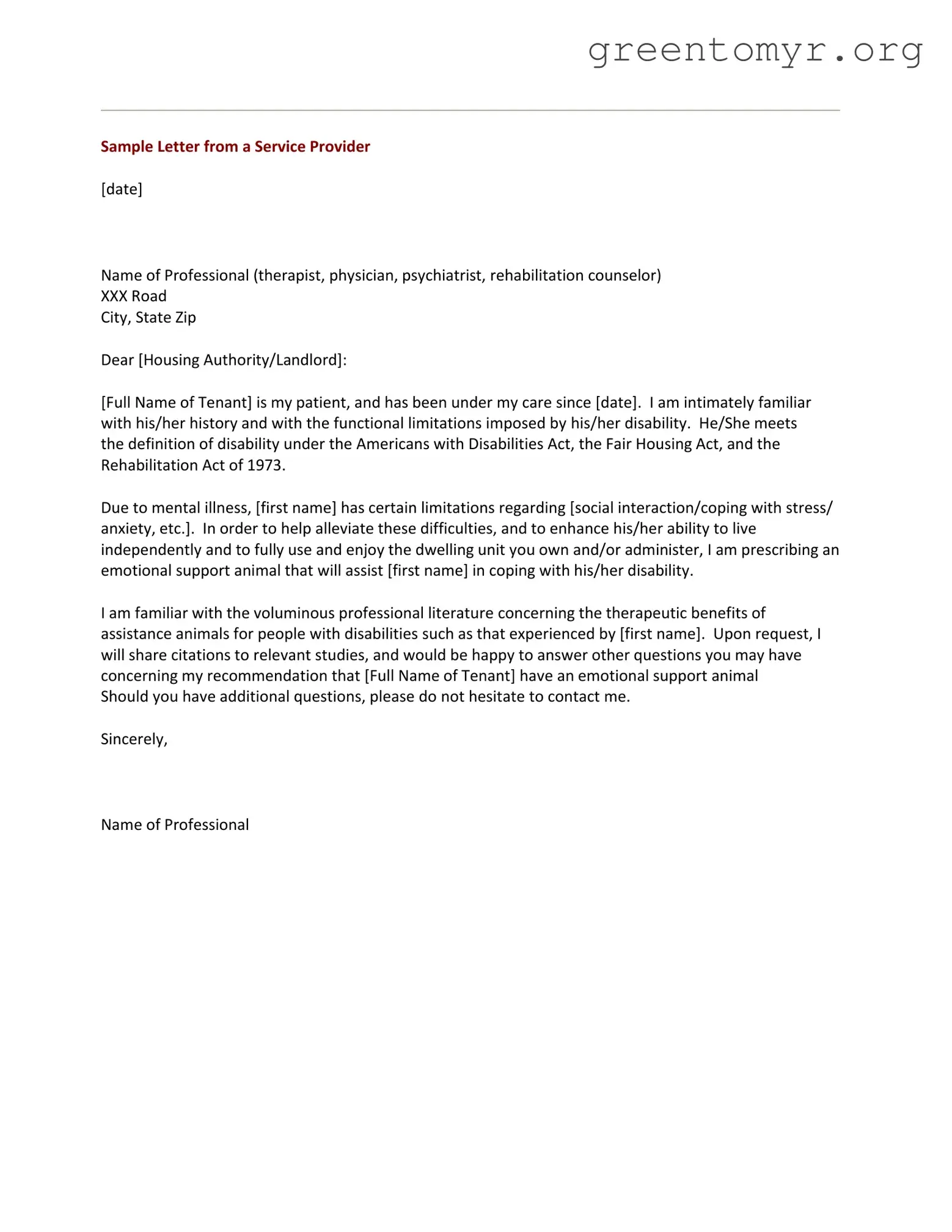When it comes to obtaining an Emotional Support Animal (ESA) letter, many individuals make mistakes that can complicate or even derail the process. Understanding these common errors is essential for anyone seeking this type of documentation. Below are nine mistakes people often make when filling out the ESA Letter form.
One significant mistake is providing inaccurate personal information. This may seem trivial, but incorrect names, addresses, or contact details can lead to confusion and delays. Always double-check the accuracy of your information before submitting the form.
Another common error involves lack of clarity regarding the nature of the disability. People sometimes enter vague descriptions or leave sections blank. A well-explained disability is crucial, as it helps ensure that the letter meets all necessary criteria. Be explicit about how the emotional support animal aids in the management of your condition.
Additionally, forgetting to include the prescribing professional's contact information is a frequent oversight. This detail is vital, as it allows for verification of the letter's authenticity. Providing a phone number and email ensures that there is a point of contact if further information is required.
People also tend to neglect the importance of using a legitimate healthcare provider. Some individuals might resort to questionable sources to obtain their letters. It’s essential to remember that credible mental health professionals are the only suitable providers. Relying on unverified sources can invalidate your letter.
Furthermore, failing to sign and date the letter is a mistake that many overlook. An unsigned or undated letter lacks validation and may be disregarded by landlords or airlines. Always ensure that all required signatures are present before submission.
Inconsistent or unclear language is another pitfall. When filling out the ESA Letter form, using technical terms or jargon can alienate those who read it. The objective is to convey your circumstances clearly. Simplifying your language makes your case stronger.
People often underestimate the importance of including a description of the animal. Many forget to identify the breed, size, and temperament of their emotional support animal. Such details provide context and assure others about how the animal complements the therapeutic process.
Another mistake involves not being aware of the laws governing emotional support animals. Some individuals may fill out the form without fully understanding their rights and responsibilities. Being informed will help ensure compliance and protect your rights.
Lastly, ignoring the follow-up process can lead to complications. After submitting the ESA Letter form, many assume everything will proceed smoothly. However, it’s wise to check back with the provider to confirm that all necessary steps have been taken.
Making these nine mistakes can lead to complications when seeking an Emotional Support Animal letter. Being diligent and thorough when completing the form is crucial for ensuring that your request is successful.

